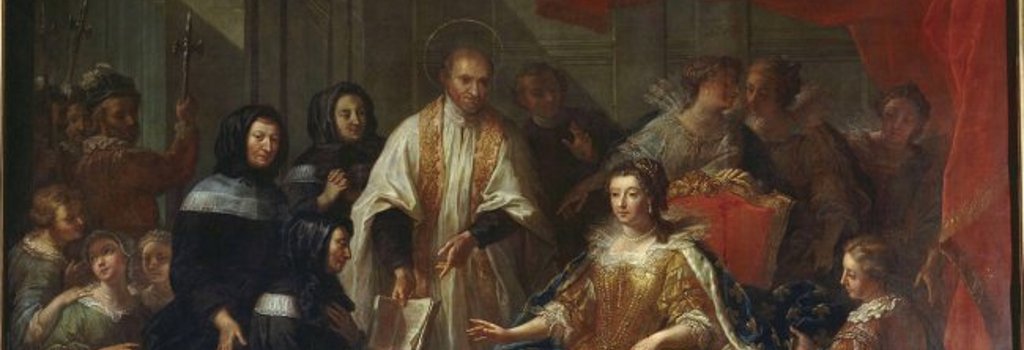
 Among the Ladies of Charity that Saint Vincent de Paul gathered around him was Madame de Pollalion, with whom he founded the Institute of Union-Chrétienne de Saint Chaumond in Paris in 1652.
Among the Ladies of Charity that Saint Vincent de Paul gathered around him was Madame de Pollalion, with whom he founded the Institute of Union-Chrétienne de Saint Chaumond in Paris in 1652.
In 1630, under the management of Monsieur Vincent and accompanied by generous women, Madame de Pollalion had the inspiration to open a house to care for young girls in difficulty. This house bore the name of the Institute of the Daughters of Providence and was set up in Charonne, a suburb of Paris.
In 1648, St Vincent de Paul had the instinct to gather seven of these generous souls around Madame de Pollalion to devote themselves more specifically to the formation and education of young girls. Four years later, on October 17, 1652, in the presence of Saint Vincent de Paul,
“they promised God through a pure love to unite themselves to Jesus Christ through a continual meditation and through a faithful meditation on his holy life, to proclaim his kingdom everywhere, even in foreign countries, and to remain united to Jesus Christ and to one another through the inseparable bond of fraternal love, assisting one another in everything possible.”
Union-Chrétienne was founded.
This name chosen by Saint Vincent de Paul himself expresses the union of the sisters with Jesus Christ and with one another. The patronage of Saint Chaumond was added because the private mansion in Paris in which they lived at the beginning bore the name. The foundation corresponded to a need. The sisters were well appreciated and were called to found several houses in Paris, then very quickly in the provinces. In turn, some of the houses founded others. The sisters of Union-Chrétienne de Saint Chaumond went under the direct jurisdiction of the Pope on May 15, 1668. This agreement which confirmed Saint Vincent de Paul’s instincts made its mark on the history of consecrated life for women. Indeed, consecration by vows was now made possible outside of contemplative life and thus allowed for the evangelization of the female world there where it was found.
 Unfortunately, the French Revolution did not save Union-Chrétienne. In the upheaval, all the Houses were closed, the sisters were dispersed, and goods were sold. Thanks to the courage and energy of Mother Bardon de Lataillée, superior of the house in Poitiers during the upheaval, the Congregation was reconstituted in Poitiers. She assembled around her the past sisters of Poitiers and Parthenay. Therefore, in 1802, Poitiers became the Motherhouse. They picked up their work of teaching again which flourished. But, towards the end of the 19th century, the Institute went through a difficult time linked to the socio-political context of the country.
Unfortunately, the French Revolution did not save Union-Chrétienne. In the upheaval, all the Houses were closed, the sisters were dispersed, and goods were sold. Thanks to the courage and energy of Mother Bardon de Lataillée, superior of the house in Poitiers during the upheaval, the Congregation was reconstituted in Poitiers. She assembled around her the past sisters of Poitiers and Parthenay. Therefore, in 1802, Poitiers became the Motherhouse. They picked up their work of teaching again which flourished. But, towards the end of the 19th century, the Institute went through a difficult time linked to the socio-political context of the country.
 In the beginning of the 20th century, Providence brought about in Mother Cécile Devrièse, recognized by Rome as Second Foundress of the Institute, the person capable of renewing the original Charism. She had the joy of opening new Houses in the diocese of Poitiers, then in the dioceses of Limoges, Bourges, Versailles, Blois, and Pontoise.
In the beginning of the 20th century, Providence brought about in Mother Cécile Devrièse, recognized by Rome as Second Foundress of the Institute, the person capable of renewing the original Charism. She had the joy of opening new Houses in the diocese of Poitiers, then in the dioceses of Limoges, Bourges, Versailles, Blois, and Pontoise.
 Then came the departure abroad to establish Houses in Spain and Portugal. A Community has also been set up in California since 1988.
Then came the departure abroad to establish Houses in Spain and Portugal. A Community has also been set up in California since 1988.